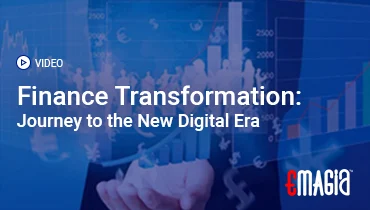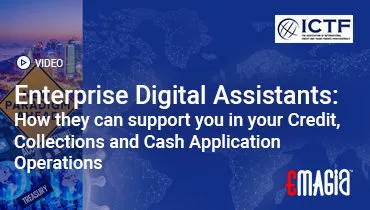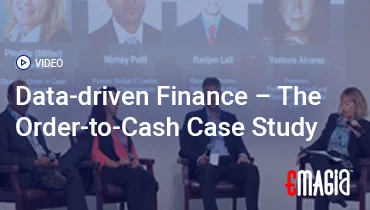Introduction to Web Invoices
In today’s digital era, businesses are increasingly adopting web invoices to streamline their billing processes. A web invoice is an electronic invoice created, sent, and managed entirely through a web-based platform or application. This approach eliminates the need for traditional paper-based invoicing, offering a more efficient and environmentally friendly solution.
Understanding Web Invoices
What is a Web Invoice?
A web invoice refers to an electronic invoice that is created, sent, and managed entirely through a web-based platform or application. It allows businesses to generate invoices online without the need for traditional paper-based processes. Web invoices typically include features such as customizable templates, automated calculation of charges, and integrated payment options, making them convenient and efficient for both senders and recipients.
Evolution of Invoicing: From Paper to Digital
The transition from paper-based invoicing to digital formats has been driven by the need for efficiency, cost reduction, and environmental concerns. Electronic invoicing (e-invoicing) allows for the digital exchange of billing documents like invoices, credit notes, and payment slips between trading partners. This evolution has simplified tracking and ensured compliance with agreements.
Benefits of Web Invoices
Efficiency and Speed
Web invoices facilitate faster invoicing processes, reducing the time between issuing an invoice and receiving payment. Automated features like recurring billing and payment reminders enhance operational efficiency.
Cost Reduction
By eliminating the need for paper, printing, and postage, businesses can significantly reduce administrative costs associated with traditional invoicing methods.
Improved Accuracy
Automated calculations and data entry reduce the likelihood of human errors, ensuring accurate billing and minimizing disputes.
Enhanced Accessibility
Being cloud-based, web invoices can be accessed from anywhere, allowing businesses to manage their invoicing processes remotely and in real-time.
Key Features of Web Invoicing Platforms
Customizable Templates
Most web invoicing platforms offer customizable templates, allowing businesses to brand their invoices with logos and specific formatting to maintain a professional appearance.
Integrated Payment Options
Integrated payment gateways enable clients to pay directly through the invoice, supporting various payment methods like credit cards, bank transfers, and digital wallets.
Automated Reminders
Automated reminders help ensure timely payments by notifying clients of upcoming or overdue invoices, reducing the need for manual follow-ups.
Reporting and Analytics
Advanced reporting features provide insights into payment histories, outstanding invoices, and overall financial health, aiding in strategic decision-making.
Implementing Web Invoicing in Your Business
Choosing the Right Platform
When selecting a web invoicing platform, consider factors such as ease of use, integration capabilities with existing systems, customer support, and scalability to accommodate business growth.
Training and Onboarding
Ensure that your team is adequately trained to use the new system. Many platforms offer tutorials, webinars, and customer support to facilitate a smooth transition.
Data Migration
If transitioning from a traditional invoicing system, plan for the migration of existing data to the new platform, ensuring data integrity and continuity.
Compliance and Security Considerations
Regulatory Compliance
Ensure that the web invoicing platform complies with local and international regulations, such as tax laws and data protection standards. For instance, in India, e-invoicing is mandated for businesses with a turnover above a certain threshold.
Data Security
Choose platforms that offer robust security measures, including data encryption, secure servers, and regular backups, to protect sensitive financial information.
Future Trends in Web Invoicing
Integration with AI and Machine Learning
The integration of AI and machine learning can enhance invoicing processes by predicting payment behaviors, automating categorization, and detecting anomalies.
Blockchain Technology
Blockchain offers a secure and transparent method for managing invoices, reducing fraud, and ensuring the authenticity of transactions. A blockchain-based billing system can facilitate smooth payments and provide a tamper-proof history of all exchanges.
Mobile Invoicing
With the increasing use of smartphones, mobile-friendly invoicing platforms allow businesses to create and manage invoices on-the-go, enhancing flexibility and responsiveness.
How Emagia Enhances Web Invoicing
AI-Powered Automation
Emagia offers an AI-powered Order-to-Cash (O2C) automation platform that modernizes finance operations for midsize to large global businesses. Its solutions improve DSO, cash flow, credit risk, operational cost, compliance, and profitability.
Comprehensive O2C Solutions
Emagia’s platform encompasses various aspects of the O2C cycle, including credit risk management, receivables, collections, deductions, cash application, and customer EIPP (Electronic Invoice Presentment and Payment).
Integration Capabilities
Emagia’s solutions are compatible with major ERP systems like SAP, Oracle, and Microsoft Dynamics, ensuring seamless integration and enhanced efficiency.
Frequently Asked Questions
What is the difference between a web invoice and a traditional invoice?
A web invoice is generated and managed digitally through an online platform, offering features like automated reminders and integrated payments, whereas a traditional invoice is paper-based and requires manual handling.
Are web invoices legally recognized?
Yes, web invoices are legally recognized in many jurisdictions, provided they meet specific regulatory requirements, such as including necessary tax information and digital signatures where applicable.
How secure are web invoicing platforms?
Reputable web invoicing platforms implement robust security measures, including data encryption, secure servers, and compliance with data protection regulations, to safeguard sensitive information.
Can web invoicing platforms integrate with existing accounting software?
Many web invoicing platforms offer integration capabilities with popular accounting software, facilitating seamless data transfer and financial management.
Is training required to use web invoicing platforms?
While many platforms are user-friendly, training can help users fully utilize all features and ensure efficient adoption across the organization.



